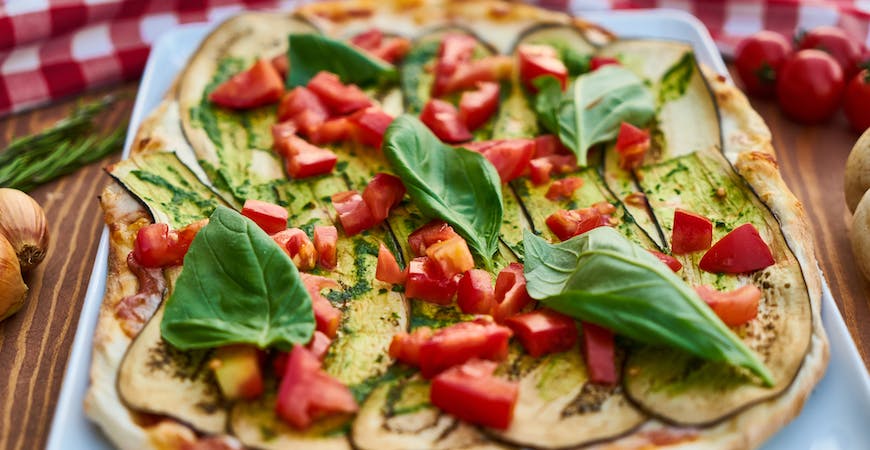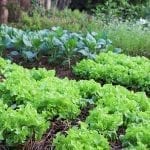
Make Your Own Pizza Garden
When it comes to pizza, we all want a slice of the action. And the best way to add some pizzazz to your pie is with your own pizza garden.
Pizza gardens contain the ingredients you need to transform your kitchen into a world-class pizzeria. These herbs and veggies will bring dazzle to your dough, zest to your sauce, and a burst of flavor to every cheesy bite.
It’s easy to grow your own pizza herb garden. Whether you’ve got a bountiful backyard or just a corner in your kitchen, you’ve got enough space to spice up your pie.
How to Make a Pizza Garden
Herbs tend to be pretty easy to care for; that makes a pizza garden a great gardening project for kids and adults.
When preparing your outdoor space, it’s both practical and fun to create one that’s pizza-shaped. That way, you can keep each herb separate in its own slice.
Before getting started, make sure you have these materials ready to go:
- Edging for the pizza shape, such as metal, plastic, or wood.
- Herb and veggie seedlings
- Compost
- Water
When choosing a spot to grow your pizza garden, consider three things:
- Sunlight
- Soil
- Size
Most of the components in your pizza garden will need ample sunlight and well-draining soil. While it will take a little more DIY effort, a raised garden bed can help if your backyard contains dense soil or clay.
Depending on what you plan to plant and how much of it you plan to grow, your garden space can be small or large.
A typical pizza garden contains at least basil, oregano, tomatoes, and garlic. If you plan on adding a couple of extra veggies of your choice to that list, you should plan on securing a spot that’s around eight feet in diameter.
Once you’ve found the right spot in your yard, it’s time to place the edging.
For the outer “crust” border, a flexible material like plastic or some metals works best. To demarcate the boundaries of each slide, use long pieces of wood or other rigid objects.
With the shape of your pizza in place, it’s time to start planting. A good rule of thumb is to plant each seedling in the soil at the same depth as they were in their container.
The one exception here would be tomatoes, which tend to grow better when planted slightly deeper. Tomatoes also need more space than other plants, so give each seedling about two feet of space.
When your plants are secured in your pizza garden’s soil, you can start watering. The bigger the herb or veggie will grow, the more water it will need.
So, tomatoes tend to need the most water and herbs the least. To avoid pests and disease, make sure to water the base of the plants and not the leaves.
As your tomatoes grow, they’ll need support for their winding, crawling stems. Either a metal cage or wooden stakes will do.
How to Grow an Indoor Pizza Herb Garden
While you may not have the space indoors for tomatoes or onions, even a small set-up on your countertop provides ample room for basil, oregano, thyme, and rosemary to grow.
In fact, if you’re looking for the best place to start an indoor pizza herb garden, consider a windowsill above a kitchen sink on a south-facing window. That will provide the sunlight and moisture your herbs need to thrive.
If you don’t have access to such a spot, you can boost the moisture content of the air with a humidifier or by placing the herb pots in a pebble tray.
What Herbs Go on a Pizza?
People identify themselves by what toppings they like on their pizza.
The battles waged between sausage stewards, and pepperoni pals have a long history that likely dates back to the first pizza oven. And don’t forget about the veggie vagabonds — while they may be meek in spirit, their relentless strength is fortified with an alphabet’s worth of vitamins.
We will mention the common pizza garden components throughout our lists. It’s hard to talk pizza without reiterating the need for tomatoes, basil, oregano, and garlic.
But our goal in these next few sections isn’t to offer a familiar refrain. It’s to show you that creativity in your pizza garden will pay tastebud dividends later on.
Circling back to the topic of pizza toppings, we encourage you to reserve a slide of your garden for some of these herb and veggie options:
- Asparagus
- Broccoli rabe
- Broccolini
- Cherry peppers
- Cherry tomatoes
- Hot peppers
- Kale
- Pumpkin
- Radicchio
- Shallots
- Zucchini
Some of these ingredients are more common than others. But the further you push the boundaries of your pizza toppings, the more you’ll realize that almost any veggie garden can be a pizza garden.
What Herbs Are in Pizza Sauce?
Tomatoes, basil, oregano, and garlic serve as the foundation of the classic red pizza sauce. However, there are still plenty of opportunities to get creative here.
So, as you plan out your pizza garden, consider leaving a space open for one of these saucy herbs:
- Bay: Adds a subtle earthiness to pizza sauce. Remember to take the leaf out before using the sauce.
- Fennel: Sweet with notes of licorice, fennel is commonly found in sausage and can help add zing to both meaty and meatless pizzas.
- Marjoram: Related to oregano, marjoram offers a gentler flavor with slightly floral and citrusy undertones.
- Rosemary: A potent herb, rosemary offers a woody, piney flavor profile that complements oregano and basil.
- Parsley: Adds fresh, peppery notes that can help round out a sweeter sauce.
- Sage: Another potent herb, a pinch of fresh sage can add an herbaceous touch to your sauce.
- Thyme: Earthy and citrusy with a slight pepperiness, thyme can bring out tomatoes’ sweetness and help balance a robust sauce.
What Goes in a Garlic and Herb Pizza Dough?
When it comes to pizza dough, it should be considered as less the conveyor of flavor than it is the foundation. Yes, you want your baked crust to take good, but it should support that which sits atop it.
So, while there is still room to experiment here, it’s better to take a lighter approach. Use your garlic and fresh Italian herbs, but make sure to save a more robust dispersal for your sauce and toppings.
As you peruse our list of herbaceous offerings, you may be tempted to simply reach for your Italian seasoning shaker. That may do in a pinch, but growing these herbs in your pizza garden will add a more robust and fresh flavor than any dried offering.
With that in mind, here are some pizza garden herbs to include in your pizza dough:
- Basil
- Chives
- Oregano
- Parsley
- Rosemary
- Thyme
We’d be remiss if we didn’t note that National Pizza Day falls a mere five days before Valentine’s Day. So, if you want to make this a special dinner for two, consider making a heart-shaped pizza.
Make Your Own Pizza Garden
Whether you make your pizza herb garden outside or indoors, you’ll find it brings value to every pie that passes through your kitchen. Even if you’re stuck with an easy-peasy frozen pizza, a pinch of fresh herbs can help make it taste homemade.
So don’t settle for dried, store-bought herbs. Instead, reach for your pizza garden and add some pizzazz to your pie.














